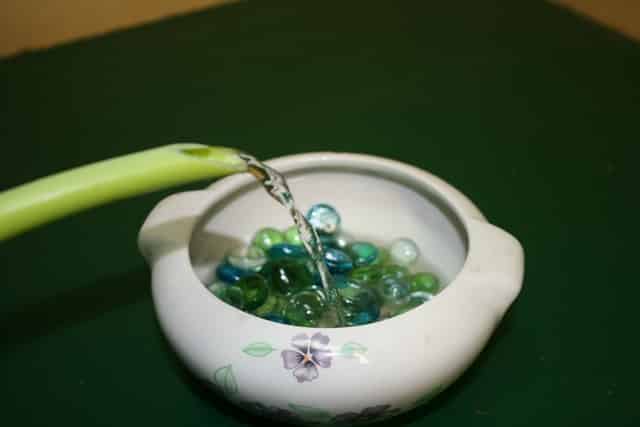Now that cool weather has set in and heaters are turning on and drying out your indoor air, chances are your plants are experiencing low humidity and the problems that come with lack of moisture in the air.
If your houseplant foliage is curling and experiencing brown leaf tips or dropping, you may have an insufficient humidity level. Many houseplants come from the jungle where the air is heavy with humidity. Heaters and cold, dry weather tend to suck the moisture out of indoor air.
Many houseplants will survive in dry air, but they do much better with additional humidity. Some indoor plants suffer more than others when the air is parched, such as orchids, fittonia, anthurium, African violets and peace lily.
To ensure that your houseplants have sufficient humidity, keep the following tips in mind.
Test the humidity levels in your home. A hygrometer or humidity meter is an instrument that measures the moisture level in your indoor air. You want the humidity level to be at least 45 percent for the health of most houseplants. The humidity in your home depends on a variety of factors, such as where you live. Coastal homes tend to be more humid than those that are inland and certain states are much more humid than others.
If you discover that your humidity level is lower than 45 percent in your home, in order to have healthy houseplants, you want to provide additional humidity. Here are three ways to do that. You can try one way or all simultaneously.
Mist. Except for fuzzy-leaved plants like African violets, houseplants do well with regular misting, which humidifies the air around plants and can discourage certain plants, like spider mites. Use a spray bottle that delivers a fine mist and filtered or bottled water, as it is less likely to cause water spotting on the foliage. If possible, mist at least once a day, as the effects tend to be short-lived.
Use a humidity tray: Placing plants above water causes a situation where the water evaporates and simultaneously humidifies the surrounding air. To create a humidity tray, fill a waterproof bowl with gravel or marbles. Add water to the container, stopping when the water level is just below the surface of the gravel or marbles. Place the plant on top, ensuring that the bottom of the pot doesn’t sit on water, as this can lead to root rot.
 Humidity tray (Julie Bawden-Davis)
Humidity tray (Julie Bawden-Davis)Group plants: If you like houseplants, it’s good to know that the more you have, the more humidified your home will be. Plants create a more humid environment for one another when grouped. Plant leaves transpire, which causes water loss from leaves. This goes into the air and humidifies nearby plants.
Keep in mind when grouping plants that placing them in the direct line of fire from a heating duct is likely to dry the air surrounding the plant up very quickly.
Try low-humidity lovers. If you have difficulty keeping your houseplants humid enough, grow plants that thrive in low-moisture conditions. A wide variety of plants do well in dry conditions, including succulents like kalanchoe and sanseviera, cactus and easy-to-grow houseplants like dracaenas, fiddle leaf fig (Ficus lyrata), yucca, pothos, ponytail plant (Beaucarnea recurvata), peperomia, cast-iron plant, hoya and spider plant.
Julie Bawden-Davis is a garden writer and master gardener, who since 1985 has written for publications such as Organic Gardening, Wildflower, Better Homes and Gardens and The Los Angeles Times. She is the author of seven books, including Reader’s Digest Flower Gardening, Fairy Gardening, The Strawberry Story, and Indoor Gardening the Organic Way, and is the founder of HealthyHouseplants.com.

